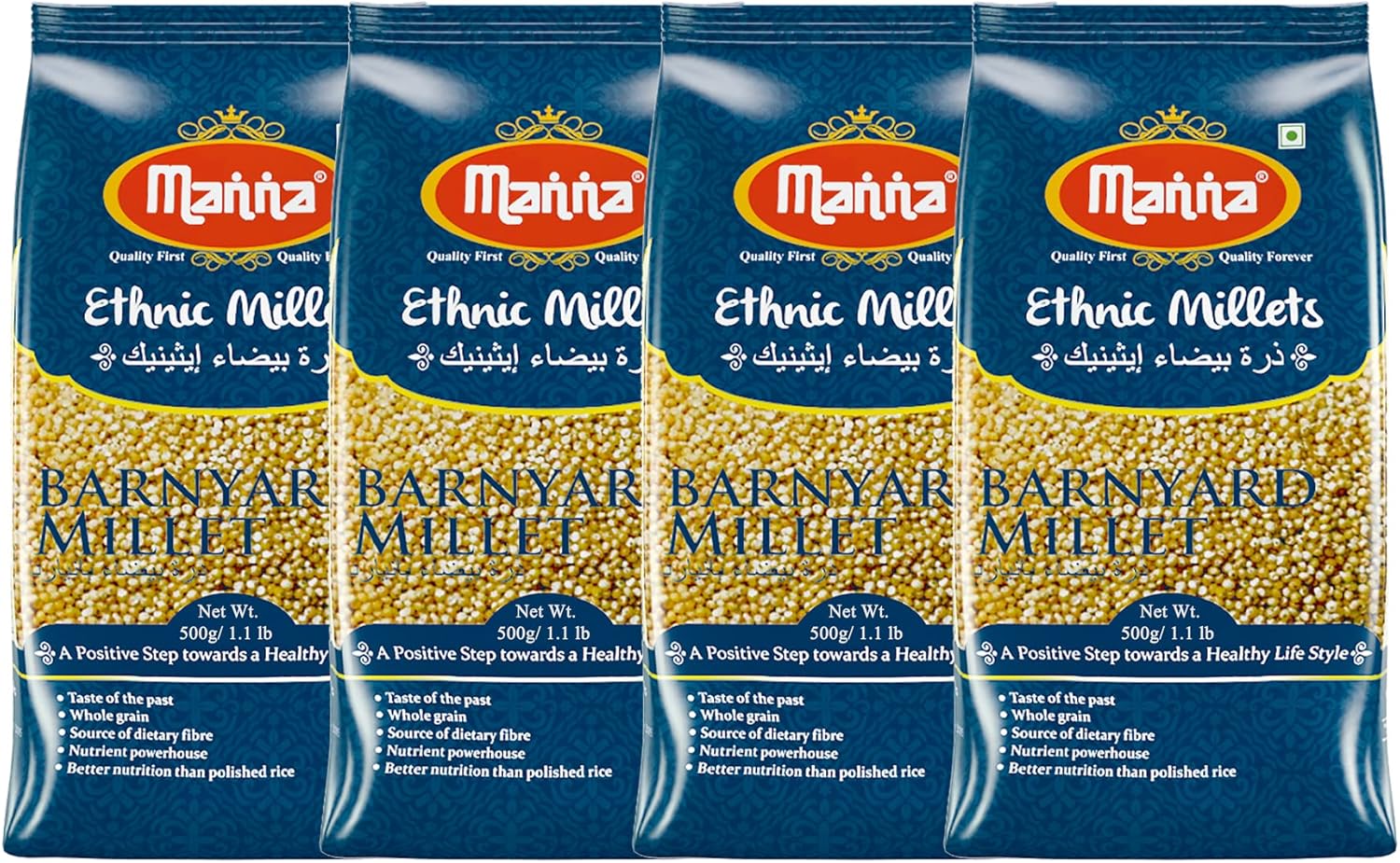
Barnyard Millet/Siridhanya 2 Kg (70.74 OZ)
FREE Shipping
Barnyard Millet/Siridhanya 2 Kg (70.74 OZ)
- Brand: Unbranded

Description
Vishwanatha JK, Mallanna KN, Aradhya KM et al (1981) Genetic variability in a world collection of germplasm of foxtail millet, Setaria italic Beauv. Mysore J Agric Sci 15:234–238 Yadav VK, Kumar B, Yadav R, Malik N, Kumar J (2010) All India coordinated small millet improvement project. Ranichauri The Echinochloa species generally has potential resistance against various biotic and abiotic stresses. However, cultivated species such as E. esculenta and E. frumentacea are widely threatened by pest and diseases (i.e., shoot fly, stem borer, grain smut, and loose smut) at different growth stages of the crop ( Jain et al., 1997; Jagadish et al., 2008). Aphid’s infection at the vegetative stage causes considerable yield reduction to E. frumentacea. So far, DHBM 996 and TNEF-204 were found to be resistant genotypes for shoot fly and stem borer ( Rawat et al., 2019). Meanwhile, Kim et al. (2008) reported that some E. frumentacea accessions have the potential for antifeeding activity against brown plant hopper, which is among the major pests that affect rice production. On the other hand, loose smut ( Ustilago tritici) and grain smut ( Ustilago panici frumentacea) are major fungal diseases that affect the grain formation in both the cultivated species of Echinochloa ( Jain et al., 1997; Gupta et al., 2010a). A heavy infestation of smuts during head formation leads to a significant reduction in grain yield and quality ( Gupta et al., 2010a). However, Nagaraja and Mantur (2008) and Gupta et al. (2010a) showed that some of the E. esculenta accessions had the immunity against both smut diseases and further provide the chance to breed the resistance lines. Hariprasanna K (2016) Kodo millet, Paspalum scrobiculatum L. In: Millets and sorghum: biology and genetic improvement, pp 199–225 Chennaveeraiah MS, Hiremath SC (1991) Cytogenetics of minor millets. In: Gupta PK, Tsuchiya T (eds) Developments in plant genetics and breeding, vol 2. Elsevier, Amsterdam, pp 613–627
Guo L, Qiu J, Ye CY et al (2017) Echinochloa crus-galli genome analysis provides insight into its adaptation and invasiveness as a weed. Nat Commun 8:1031 Hariprasanna K (2017) Foxtail millet, Setariaitalica (L.) P. Beauv. In: Patil JV (ed) Millets and sorghum: biology and genetic improvement, 1st edn. John Wiley & Sons Ltd., Chichester, pp 112–149 Seetharam A, Gowda J, Halaswamy JH (2003) Small millets. In: Chowdhury SK, Lal SK (eds) Nucleus and breeder seed production manual. Indian Agricultural Research Institute, New Delhi, pp 54–67 Yadava HS, Jain AK (2006) Advances in kodo millet research. Directorate of Information and Publications of Agriculture, Indian Council of Agricultural Research, New DelhiNagarajan C, Raveendran TS (1985) Germplasm mobilization and utilization in finger millet in Tamil Nadu. In: National Seminar on Finger Millet. Genetics and Breeding, UAS, Bangalore Radhajeyalakshmi R, Yamunarani K, Seetharaman K, Velazhahan R (2003) Existence of thaumatin-like proteins (TLPs) in seeds of cereals. Acta Phytopathol Entomol Hung 38:251–257. https://doi.org/10.1556/APhyt.38.2003.3-4.5
The Supplementary Material for this article can be found online at: https://www.frontiersin.org/articles/10.3389/fgene.2020.00500/full#supplementary-material Footnotes
References
Sood S, Joshi DC, Pattanayak A (2020) Breeding advancements in barnyard millet. In: Gosal S, Wani S (eds) Accelerated plant breeding, volume 1. Springer, Cham, pp 391–409. https://doi.org/10.1007/978-3-030-41866-3_15 Sateesh P V (2010) Millets: future of food and farming. Hyderabad: Millet Network of India Deccan Development Society FIAN, pp 2–9
Athwal DS, Singh G (1966) Variability in Kangni-1. Adaptation and genotypic and phenotypic variability in four environments. Indian J Genet 26:142–152 Clayton WD, Renvoize SA (2006) Genera graminum: grasses of the world in Kew bulletin additional series XIII, Royal Botanical Gardens Kew. University of Chicago Press, Chicago, IL Ugare R, Chimmad B, Naik R, Bharati P, Itagi S (2014) Glycemic index and significance of barnyard millet ( Echinochloa frumentacae) in type II diabetics. J Food Sci Technol 51:392–395. https://doi.org/10.1007/s13197-011-0516-8 Liu X, Jones MK, Zhao Z, Liu G, O’Connell TC (2012) The earliest evidence of millet as a staple crop: new light on Neolithic foodways in North China. Am J Phys Anthropol 149:283–290. https://doi.org/10.1002/ajpa.22127 Yadava HS, Tikle AN, Bhagat DV (2003) Effect of induced mutation through gamma rays on growth and yield parameters of kodo-millet. J Soil Crops 13(1):25–28
Genomic Resources and Utilization
Underwood MP (2000) Genetic enhancement of sorghum and millet residues fed to ruminants: farmers' perceptions of fodder quality in livelihood systems: summary report: PRA case studies in Andhra Pradesh, Gujarat, Maharashtra, Karnataka and Rajasthan States. ILRI (aka ILCA and ILRAD) Sampath TV, Razvi SM, Singh D, Bondale KV (1989) Small millets in Indian agriculture. In: Seetharam A, Riley KW, Harinarayana G (eds) Small millets in global agriculture, Oxford & IBH Publishing Co. Pvt. Ltd., India. pp 33–44 Ganapathy KN (2017b) Genetic improvement in little millet. In: Patil JV (ed) Millets and sorghum: biology and genetic improvement, 1st edn. John Wiley & Sons Ltd., Chichester. https://doi.org/10.1002/9781119130765.ch6
- Fruugo ID: 258392218-563234582
- EAN: 764486781913
-
Sold by: Fruugo
